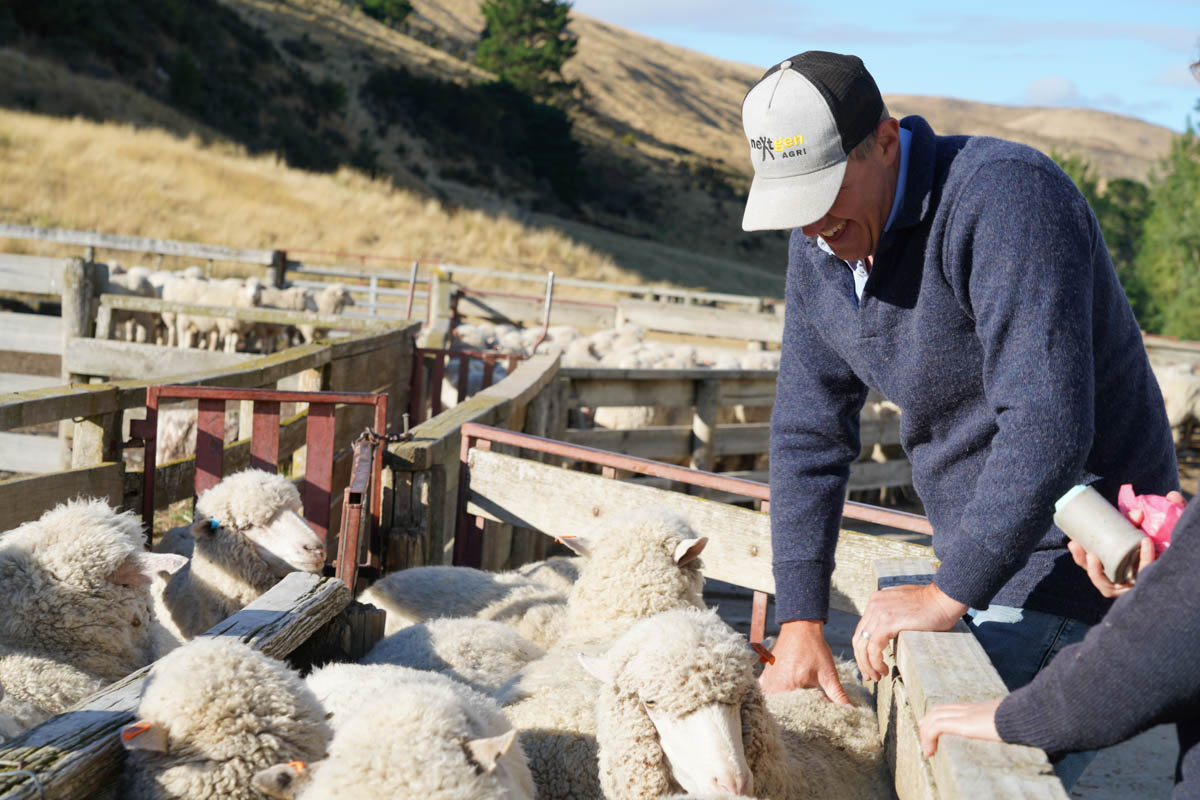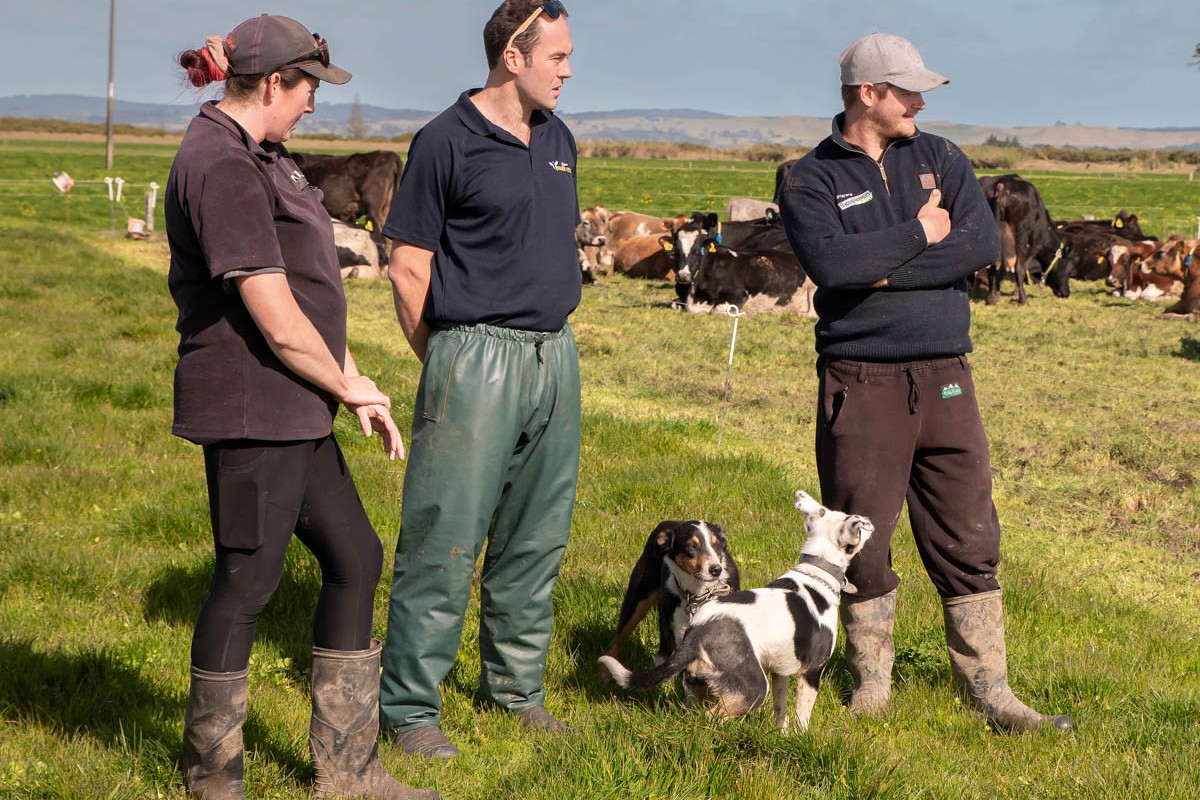The net productivity and profitability of a farm system is determined by many variables. Canterbury-based veterinarian Ben Allott looks at these, especially animal health.
It can be difficult to assess the true contribution of a single one of these variables to the overall success of your operation, and simple analysis can be misleading.
At an action network group event last year, a financial benchmarking analysis showed that the average gross farm income (GFI) contribution from each sheep stock unit across the group was about $145/SU. Across these same farms each cattle stock unit directly contributed $115/su to GFI. This generated some interesting discussion across the group. Some advocated higher sheep numbers to increase GFI and in their estimation, profitability. Others in the group urged caution and argued that the simple GFI/su figure grossly underestimated the contribution of cattle to the productivity of the total farm and to achieving lower cost structures in the business. I found these discussions fascinating so fleshed out a few of the key points and added in a few of my own.
The cost of feed consumed:
In general terms, higher quality feed is more expensive to grow, even more so when this high quality feed is required in the winter, or during the summer dry. Regrassing is more frequent, seed/chemical/fertilizer costs are higher, more hours are spent in a tractor burning fuel. Re-grassing and crop establishment also comes with more risk. The spring/summer of 2018 was full of crop establishment disappointment in North Canterbury. High producing sheep breeding systems have a high reliance on quality feed for tupping, quality feed for wintering and high quality feed for lactation. If finishing lambs and mating hoggets there’s a need for very high quality feed through the summer dry. In contrast, beef breeding cows produce product from much lower quality and cost feed. For most of the year beef cows are consuming the feed the sheep won’t eat.
Contribution to improved feed quality
In almost every dryland farm situation a surplus of feed builds in late spring and early summer. With the development of seed-head due to high temperatures and summer dry, this surplus feed is of poor quality. If not consumed and tidied up, this feed carried through the autumn and winter, will significantly reduce feed quality and the amount grown next spring. Sheep can be used to tidy up pasture but often this presents challenges with the demand for high quality feed through the sheep production cycle. And the practical challenges in getting sheep to consume very low quality tag.
Pushing ewes to consume low quality tag through March and April risks lower ovulation rates and reduced scanning percentages. Beef cows are already well in-calf and if well-conditioned are the perfect stock class to lock down onto maintenance allocations on low quality feed.
In June and July ewes need increasing allocations of higher quality feed to maintain body condition score (BCS) through mid and late pregnancy. Ewes losing body condition through this period will have poorer lamb survival, give birth to lighter lambs and the surviving lambs will have lower pre-weaning growth rates. Time and time again beef cows have been shown to tolerate BCS loss through the winter without adversely affecting productivity as long as they calve at BCS 5. Beef cows are extremely resilient and flexible and can be used to control pasture quality on maintenance allocations through periods of the years that sheep simply can’t.
To consume poor quality pasture and leave behind an evenly grazed paddock, a mob of animals needs to be pushed to maintenance or even sub-maintenance allocations. When using ewes to do a hard tidy up this will result in post-grazing residuals of less than 1cm (800kgDM). If higher residuals are left by ewes, the grazing pattern will be inconsistent, clumps will be left, and dead material will remain. Beef cows will leave an evenly grazed paddock at residuals of 2-3cm (1100-1200kgDM/ha). In many colder parts of NZ you are lucky to grow 200-300kgDM/ha through the winter. If you are trying to smash rank dead material out of pastures late in the autumn, and want to be able to set-stock ewes for lambing, you can’t afford to deck the paddock to 1cm with ewes. You won’t have enough cover come lambing. The beef cow is flexible enough to handle the low quality feed, tight allocations and moderate BCS loss in the winter. It leaves sufficient cover behind to freshen up to good lambing feed for set-stocking.
Feed grown in finishing systems:
I have heard a local farm consultant say on multiple occasions that under irrigation you will grow 15% more feed if you finish cattle rather than lambs on the same area. Several members of the action network group made similar comments that the grazing pressure and behaviour of lamb-only finishing results in less feed grown. In their experience having finishing cattle following lambs was a superior system. More feed is grown, feed is maintained at higher quality, and feed utilization is improved.
Internal parasite contamination, animal health costs and the development of drench resistance: This is the area of this conversation that as a vet excites me the most.
Contaminators and vacuum cleaners
Contaminators are animals that develop large parasite burdens. As a result, their faecal egg counts are high, and because a lot of parasite eggs pass in their faeces, they contribute to more parasite larvae on pasture. These animals create dirty/contaminated pasture.
Vacuum cleaners are animals that consume more parasite larvae than they put out behind them. They can eat large numbers of parasite larvae but their immune systems are effective and kill them. They maintain low faecal egg counts and because of this, these animals create cleaner pasture/lower contamination.
Cattle are vacuum cleaners of sheep parasites, and sheep are vacuum cleaners of cattle parasites. The effect of cross-grazing sheep and cattle is two-fold. The first effect is that by grazing more cattle stock units, you generally need to compensate by running fewer sheep. Fewer sheep equals fewer sheep parasite eggs passed onto pasture. The second effect is when a cattle beast eats a sheep parasite larvae on pasture. The larvae is killed and the cattle beast does not put any sheep parasite eggs out behind it. More cattle in the system equals less sheep parasite eggs passed. More sheep parasites are consumed and killed. More sheep parasites are vacuumed and the pastures are cleaner. The effect works the opposite way as well with sheep vacuum cattle parasites. Ideally a sheep to cattle ratio of 50:50 provides that best balance.
Contaminator or hoover
Older stock tend to be vacuum cleaners, young stock are contaminators. Young cattle (less than 15 months) and lambs (less than 9 months) have immature immune responses that are not very effective in controlling parasite numbers. These young animals develop large parasite burdens, they suffer the most significant disease and production losses. They develop very high faecal egg counts and contribute massively to the contamination of pasture with parasite larvae. Older stock, when well fed and under low stress, have more effective immune responses and control the number of parasites in their gut more effectively. While they still pass some parasite eggs in their faeces, for most of the year older stock classes eat more larvae on pasture than they deposit in faeces.
This goes right out the window if older stock are placed under stress, are underfed, are in poor BCS, are challenged by disease, or are made to eat pasture heavily contaminated with parasite larvae. Ewes can become significant sources of contamination if they are under the pump.
A farm system that has stocking policies heavily geared to one species (e.g. 90% sheep) is geared toward contaminators rather than vacuum cleaners.
A farm system that has stocking policies heavily geared to young stock (finishes all their lambs and mates hoggets) is geared toward contaminators rather than vacuum cleaners.
Farm systems geared toward contaminators are heavily reliant on chemical control (drenching) to keep the system in check, whereas farm systems geared toward vacuum cleaners reduce their reliance on chemical because their stocking policies provide a natural balance. The development and selection of drench resistant parasites is simply a function of how much drench is poured into your system. If you have to pour drench into your farm because the stocking policies gear your farm toward contamination and chemical reliance, then you will develop drench resistant parasites. They will become a significant problem sooner.
Contaminators equal reliance on chemical equals more drench equals less refugia equals resistant parasites
Farm systems geared toward vacuum cleaners can have very low drench inputs. Farmers around them can be astounded by the cost and workload savings. They can be even more astounded at the level of productivity. It would be great for veterinary business to be able to provide the true solution to all your parasite problems in a drum of drench. The reality is though, the more chemical you have to pour in, the quicker you develop drench resistance.
Some regular ‘alarm bell’ comments I hear regularly are farmers saying they have to:
- drench ewes regularly to maintain body condition score or to prevent disease.
- use long-acting treatments prior to lambing or the wheels come off.
- drench my lambs every 3-4 weeks or growth rates crash and/or else I will see diseased lambs.
- double/triple resistant sheep parasites identified on my farm but I can’t reduce drench use or productivity will suffer.
If any of these comments resonate with you as a sheep farmer dealing with constant parasite challenge then I would encourage you to look at what impact your stocking policies are having on the balance of contaminators to vacuum cleaners. It may be time to explore the power of the beef cow.




